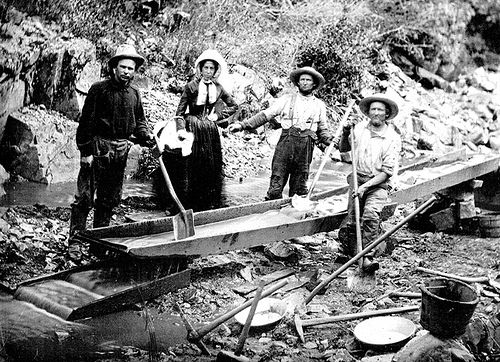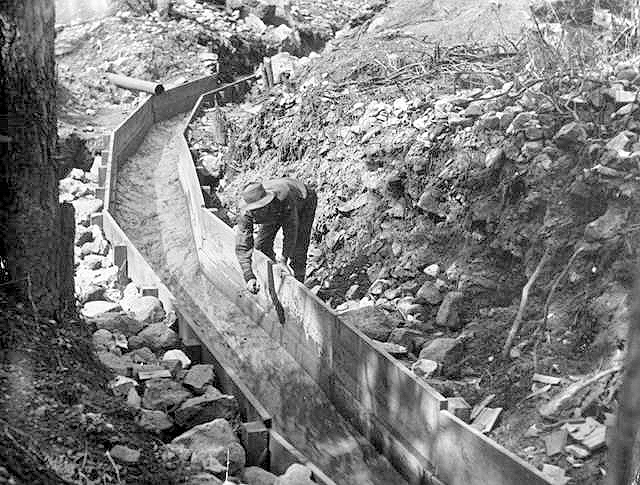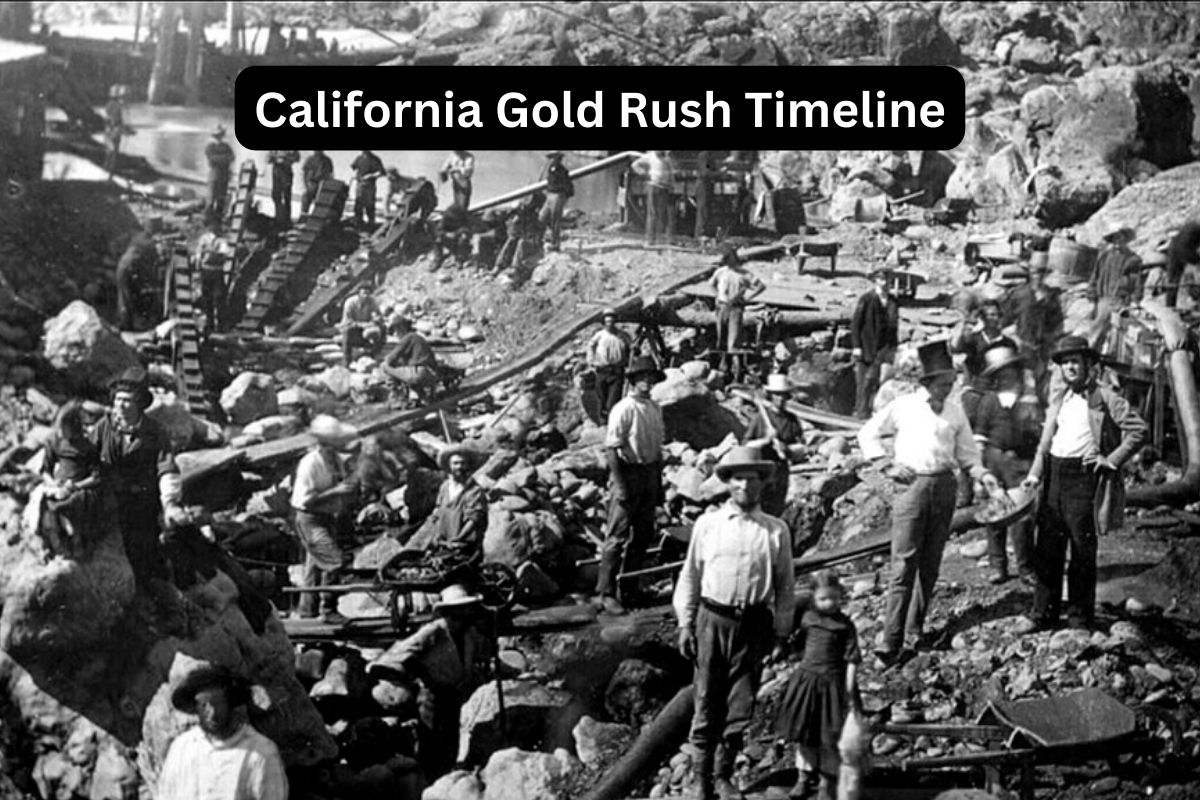The California Gold Rush, from 1848 to the late 1870s, was a transformative event in American history.
It began with the discovery of gold at Sutter’s Mill, attracting thousands of prospectors, known as “Forty-Niners,” from around the world.
The Gold Rush led to rapid population growth, economic development, and the eventual statehood of California. Although it brought wealth to some, it posed challenges for many, and its environmental impact was significant.
As the easily accessible gold dwindled, California shifted focus to other industries. Nonetheless, the Gold Rush remains an iconic period, symbolizing adventure, ambition, and entrepreneurship.
| Year | Event |
|---|---|
| 1848 | Gold discovered at Sutter’s Mill |
| 1849 | Gold Rush begins, attracting thousands of people |
| 1850 | California becomes the 31st state of the United States |
| 1852 | Introduction of hydraulic mining |
| 1859 | Discovery of the Comstock Lode in Nevada |
| 1861 | Civil War begins in the United States |
| 1869 | Completion of the First Transcontinental Railroad |
| 1870s | Decline in gold production |
| 1884 | Closure of the last major hydraulic mine |
Timeline of the California Gold Rush
1848 – Gold discovered at Sutter’s Mill
In January 1848, James W. Marshall, a carpenter and sawmill operator, discovered gold at Sutter’s Mill, which was owned by John Sutter.
Also Read: California History Timeline
Marshall’s discovery set off a chain of events that would have a significant impact on California and the United States. Initially, Marshall and Sutter tried to keep the discovery a secret, but news of the gold quickly spread.

1849 – Gold Rush begins, attracting thousands of people
The news of gold discovery at Sutter’s Mill spread like wildfire, sparking the famous California Gold Rush. In 1849, a massive influx of people from all over the world, often referred to as “Forty-Niners,” flocked to California in search of fortune.
Prospectors, adventurers, and opportunists arrived by land and sea, leading to a population boom in the region. The Gold Rush attracted people from various backgrounds and countries, including the United States, Mexico, China, Europe, Australia, and South America.
1850 – California becomes the 31st state of the United States
The population surge caused by the Gold Rush had significant political implications. In September 1850, California was admitted as the 31st state of the United States.
The sudden increase in population and the economic importance of gold mining played a crucial role in accelerating California’s statehood process.
Additionally, the Gold Rush prompted the need for governance and infrastructure development in the region, leading to the formation of state institutions, including a state constitution.
1852 – Introduction of hydraulic mining
In 1852, hydraulic mining was introduced as a new method of extracting gold. This technique involved the use of high-pressure water jets to erode hillsides and wash away gravel and sediment, revealing gold deposits.
Hydraulic mining allowed for the processing of large amounts of earth, increasing the efficiency of gold extraction.
However, it also caused significant environmental damage, as the sediment and debris washed into rivers, clogging waterways and causing problems downstream.

1859 – Discovery of the Comstock Lode in Nevada
In 1859, a major silver deposit known as the Comstock Lode was discovered in Nevada, not far from the California border. This discovery attracted a significant number of miners away from California, as they sought their fortunes in the new silver rush.
The Comstock Lode was one of the richest silver deposits in the world, and its discovery further diversified the mining industry in the region.
1861 – Civil War begins in the United States
In 1861, the American Civil War broke out, shifting the focus and resources of the United States away from the Gold Rush. The war created significant disruptions and challenges for the mining industry in California.
Many miners left their claims to join the war effort, while others faced labor shortages and supply disruptions. The Civil War also impacted the broader economic and political landscape of the United States, diverting attention from the Gold Rush and shaping the country’s history.
1869 – Completion of the First Transcontinental Railroad
In 1869, the First Transcontinental Railroad was completed, linking the East Coast of the United States to California.
The railroad provided a faster and more efficient means of transportation for people, goods, and equipment to and from California.
The completion of the railroad had a profound impact on the Gold Rush, as it facilitated the movement of miners, supplies, and machinery to the mining regions. It also enabled the efficient transportation of California’s gold and other resources to markets across the country.
1870s – Decline in gold production
By the 1870s, the easily accessible surface gold deposits had largely been exhausted, leading to a decline in gold production. The initial gold rush fervor began to wane as the remaining gold required more complex and expensive mining techniques to extract.
Many small-scale miners struggled to maintain profitable operations, and larger mining corporations began to dominate the industry. As gold became scarcer, the focus of California’s economy began to shift towards other industries, such as agriculture, manufacturing, and trade.
1884 – Closure of the last major hydraulic mine
In 1884, the last major hydraulic mine in California was shut down. The environmental impact caused by hydraulic mining, including the destruction of rivers, farmlands, and habitats, had raised concerns.
Lawsuits and regulations were implemented to curb the harmful effects, leading to the closure of large-scale hydraulic mining operations. This marked the end of an era for this particular method of gold extraction and highlighted the growing awareness of environmental conservation in the state.
